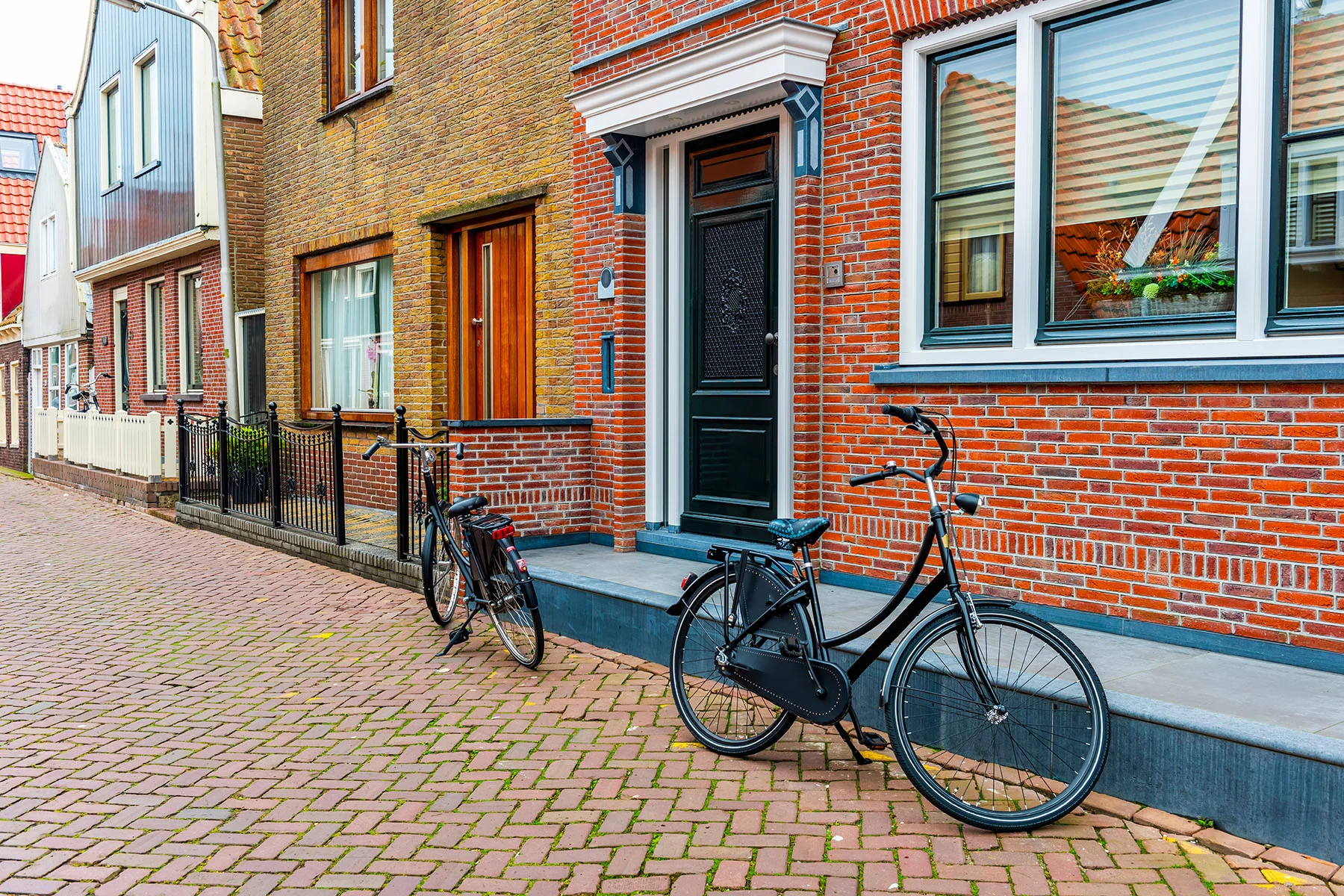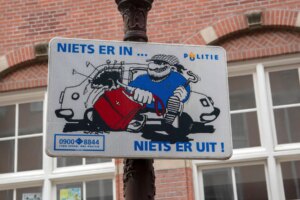After sustaining catastrophic damage during World War II (WW2), Rotterdam literally rose from the ashes, rebuilding itself as one of the Netherlands’ most architecturally innovative and experimental cities. The city’s unique design and urban planning are now a major draw for locals and expats alike.
If you’re also thinking of moving there, here’s what you need to know about the city:
Spotahome
Looking for somewhere to rent in the Netherlands? Spotahome takes the hassle out of househunting by doing the hard work for you. Their online platform lets you find, view, and book rental properties all from the comfort of your own home. Take the stress out of househunting in the Netherlands with Spotahome.
Some background on Rotterdam
Where is Rotterdam located?
Rotterdam is nestled on the Rhine-Meuse-Scheldt Delta (Rijn-Maas-Scheldedelta) in the province of South Holland (Zuid-Holland) in the Netherlands. A delta is where rivers join together – in this case the Rhine (Rijn), Meuse (Maas), and Scheldt (Schelde) – and flow onwards – in this instance to the North Sea (Noordzee).
Rotterdam is split into two halves by the river Nieuwe Maas (New Meuse). While its city center lies primarily on the northern bank of the river, recent urban development has also spread to the south side of the river, into an area called the Kop van Zuid (Head of South).
As a city, Rotterdam’s past, present, and future are inherently tied up with this strategic location and its identity as Europe’s leading port city. The three rivers provide convenient access to Europe, including the German Ruhr district and its many industrial areas. Even today, much of the city’s economy is based on shipping.

As with most Dutch cities, traveling by bicycle is the most popular form of transport in Rotterdam. However, if cycling isn’t your thing, rest assured that there is also a reliable and well-connected public transport network including regular bus, tram, metro, and ferry services.
The train station Rotterdam Centraal (Rotterdam Central Station) is also one of the country’s major transport hubs providing local and international connections to Belgium, Germany, France, and the United Kindom (UK).
Rotterdam’s population demographics
Roughly 664,000 people live in Rotterdam (2022), making it the second-largest city in the Netherlands.
The city’s population is an impressively diverse bunch. Rotterdam is home to 174 global nationalities and more than 55% of the population have a migrant background. Sizeable communities from Europe (including Russia), Morocco, Surinam, and Turkey have settled in the city, and even the former mayor, Ahmed Aboutaleb, is of Moroccan descent.
Rotterdam is celebrated as one of the most LGBTQ-friendly cities in the Netherlands, and with good reason. While Amsterdam might have Pride, Rotterdam has the largest LGBTQ+ sports club in the country, as well are numerous LGBTQ+ venues and events, including – of course – Rotterdam Pride Week.
The typical Rotterdammert, as they are colloquially called, is very ad hoc. They will tell you exactly what they think and won’t mince words (more so than the average Dutch person). They’re also hardworking – the unofficial city slogan is “niet lullen, maar poetsen” (no talking, but scrubbing) – and always strive for a bigger and better future.
A city known for its modern art and architecture
This future-forward mentality of its inhabitants is also reflected in Rotterdam’s unique and innovative cityscape. Back in 1940, it took German bombers just fifteen minutes to decimate the city center. Yet, rather than restoring their city to its former glory, the residents of Rotterdam chose to adapt and build a new city that embraced the future.
Consequently, Rotterdam is home to some incredible feats of experimental architecture. These include the famous Cube Houses (Kubuswoningen), the sleek-designed Market Hall (Markthal), and the ultra-modern Depot Boijmans Van Beuningen – the world’s first publicly accessible art storage depot.
Across the city, you’ll also find numerous modern statement-art statues, including:
- Sylvette by Pablo Picasso (1970)
- Santa Claus by Paul McCarthy (better known as Gnome Buttplug (Kabouter Buttplug), 2004-8)
- Cascade by Joep van Lieshout (2010)
- Mikado by Herman Lamers (2013)
- De Vlecht (the Braid) by Kalliopi Lemos (2021)
- Moments Contained by Thomas J Price (2023)
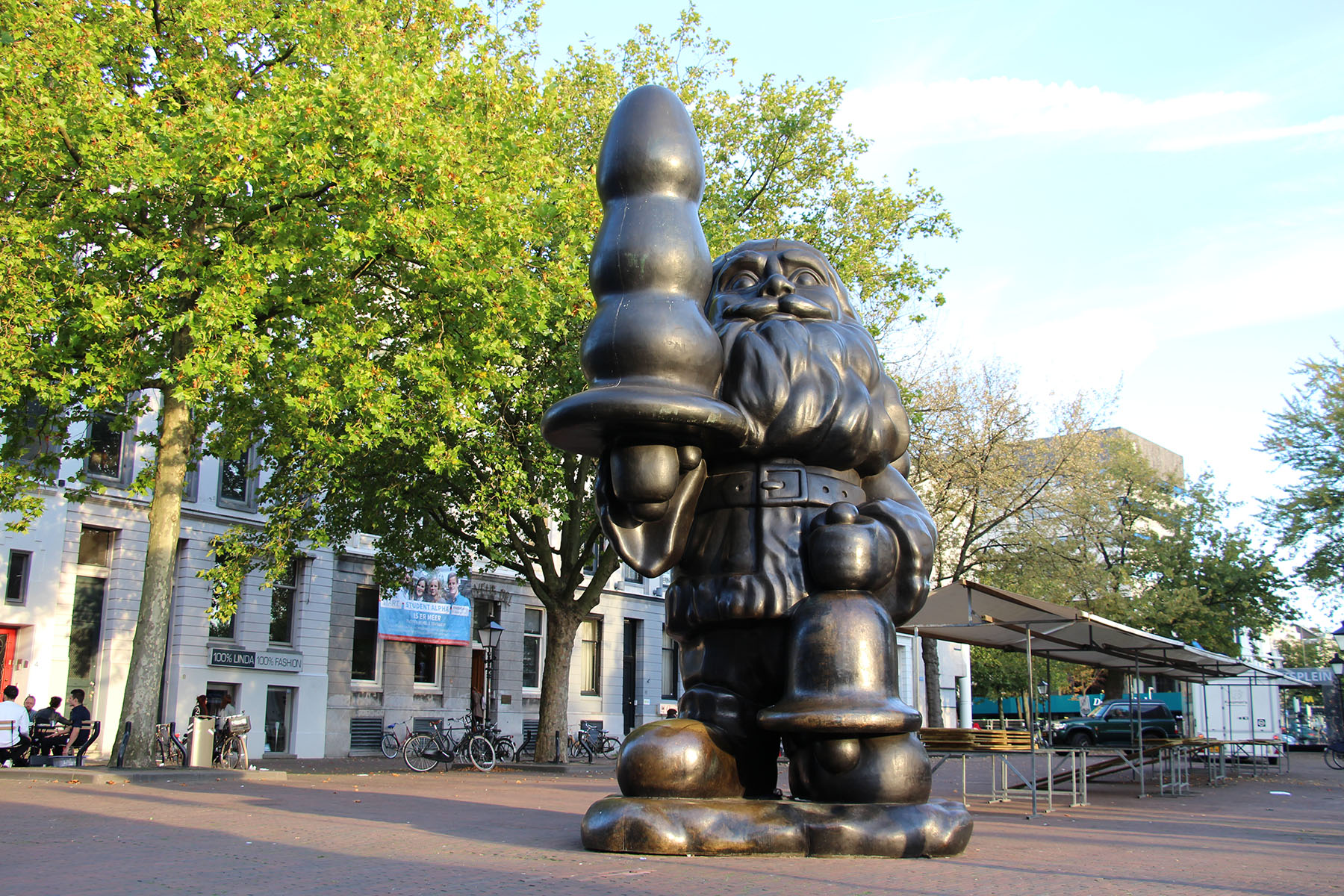
Speaking of a bigger and brighter future, Rotterdam is striving to become more climate-adaptive and create a completely circular economy by 2030. As such, it recently transformed many of its outdoor spaces and has planted the largest harvestable rooftop garden in Europe. In 2023, the city was named the world’s most ideal destination for sustainably-minded travelers on Kayak’s City Index for Mindful Travellers.
How to find housing in Rotterdam?
Rotterdam’s popularity among Dutchies, expats, and (international) students means that the housing market is very competitive. Whether you’re interested in buying or renting, you will need to move fast to secure a property.
You can find housing in Rotterdam using property websites with customizable search filters, such as:
Subscribing to property updates on these platforms is a good way to ensure you can respond promptly to suitable listings. Another great way to find a home is by using Living in Rotterdam, Facebook groups, and word-of-mouth.
Expats searching from abroad will benefit from using a local intermediary. However, even if you are already in the Netherlands, it can be helpful to go through a Dutch real estate agent (makelaar). The Dutch Cooperative Association of Real Estate Agents (Nederlandse Coöperatieve Vereniging van Makelaars – NVM) lists certified agents for international housing in Rotterdam.
Typical accommodation in Rotterdam
As an architecturally modern city, housing options in Rotterdam are diverse and offer something for every taste. Housing is usually cheaper in Roffa, as the city is sometimes endearingly called, than in Amsterdam or Utrecht. In 2022, people paid on average around €18 per square meter, compared to an estimated €25 in Amsterdam and €20 in Utrecht.
The rental market usually experiences rapid year-on-year changes, with a 13.9% annual increase in the last year. That is in comparison with a 17.9% average rise annual rise in Amsterdam and 25.8% in Utrecht.

In Rotterdam, apartment living is very much the norm, particularly closer to the city center. Most places are relatively new and energy-efficient. If you have your heart set on a house, it’s better to look toward the outskirts of the city where high-rise buildings give way to more green and spacious areas.
What are the renting options in Rotterdam?
Rental properties in Rotterdam are usually sublet in one of three states:
- Fully furnished (with furniture, household appliances, bedding, and the like)
- Upholstered (with floors, light fittings, and sometimes curtains or blinds)
- As a shell (without floors, lighting, and sometimes even a kitchen)
Prices vary according to the state in which a property is rented. Some fully furnished properties are available as short-term rentals, which can be ideal for expats while they are searching for a long-term place. A typical contract will be for one calendar year, before moving to a rolling contract.
Funda, Pararius, and Kamernet are among the most popular websites for browsing up-to-date rental properties in Rotterdam.
Low-income households can also apply for social housing. However, the waiting list for these properties is incredibly long; in Rotterdam, the average waiting time is 52 months (2022).
If you want to buy property in Rotterdam
If you’re staying in the Netherlands for five years or more, it might be more economical to purchase a house rather than rent it. This is due to tax incentives and long-term benefits attached to Dutch homeownership.
As with rental properties, the competition to buy a home in Rotterdam is high, and overbidding is common. In 2023, the average sale price of apartments was just over €460,000, and houses were sold for just over €716,000.
If those prices haven’t scared you off, you can get a mortgage through any bank in the Netherlands. There are also mortgage brokers who are experienced in supporting and guiding expats through the buying process, including:
The neighborhoods in Rotterdam
Covering over 324 square kilometers, Rotterdam is a large city with its outer boundaries reaching the sandy coastline. So while the city center is located 30 kilometers inland, you can reach the seaside in just 35 minutes by metro.
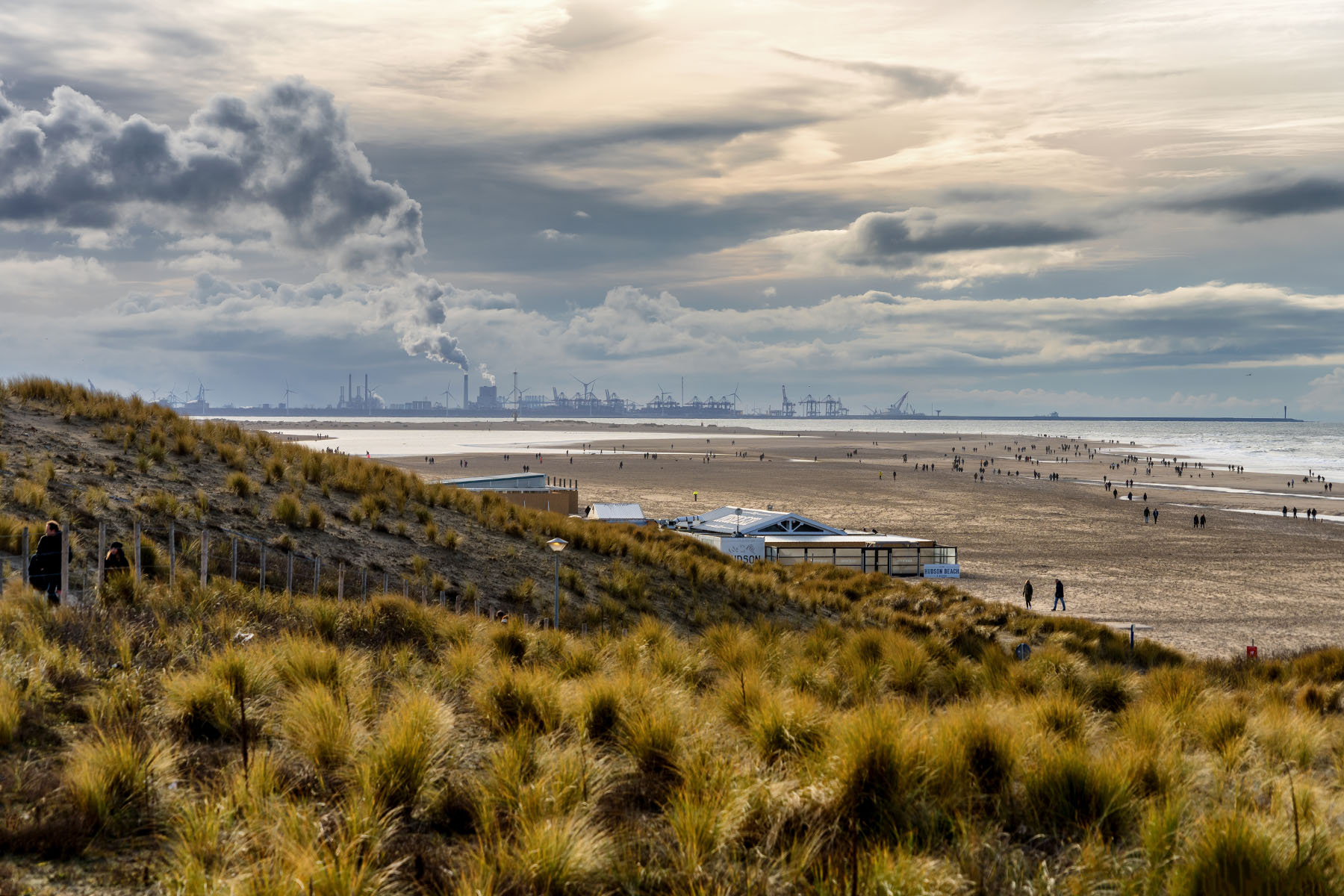
Rotterdam itself is divided into 14 districts, each with a number of smaller, unique neighborhoods. For simplicity, this overview will be given by district rather than neighborhood.
City center
The city center (stadscentrum) is the commercial and cultural heart of Rotterdam. Within this district, expats can live alongside iconic landmarks such as the Cube Houses, Euromast, and Erasmus Bridge. It’s also home to numerous museums, including Art Hall Rotterdam (Kunsthal Rotterdam), the Natural History Museum Rotterdam (Natuurhistorisch Museum Rotterdam), and World Museum (Wereldmuseum).
Little C Coolhaven, a new housing development along the waterfront, offers modern apartments close by. For more spacious city living (with a matching price tag), expats can look towards the stately buildings around Erasmus Bridge, such as New Orleans and Montevideo.
Facilities around Centrum
Art has a tendency to spill out onto the streets of the city center, particularly around its cultural venues. Rotterdam’s street art is continually evolving, but a good starting point is the area around the Witte de Withstraat, a prominent street known for art galleries and a vibrant cultural scene. If you’re more into performance art, you can enjoy theater, dance, and music at Theater Rotterdam and De Doelen concert hall.
Shopping fanatics will be able to get their fill of big brands and small boutiques at the Lijnbaan, Koopgoot, and the surrounding areas. And foodies can revel in a continually evolving culinary scene that showcases some of the best food the world has to offer, including 18 Michelin-starred restaurants across the city.
Expats living in Centrum can access premier medical care through the nearby Erasmus Medical Center, the largest hospital in the Netherlands. This center works together with Erasmus University and is a global leader in medical research across numerous disciplines.
Parents can use the municipality’s school finder to search for local schools and daycares. There are two international schools in Centrum: the government-subsidized Harbour International School and the Rotterdam International Secondary School. Rotterdam also has many excellent childcare options, including Partou, who have several branches in around the city.
Environment in Centrum
Centrum’s location, transport links, and cosmopolitan atmosphere are a huge draw for locals and expats alike. It is also home to a diverse international community, making it one of the easiest districts to find and connect with like-minded people.
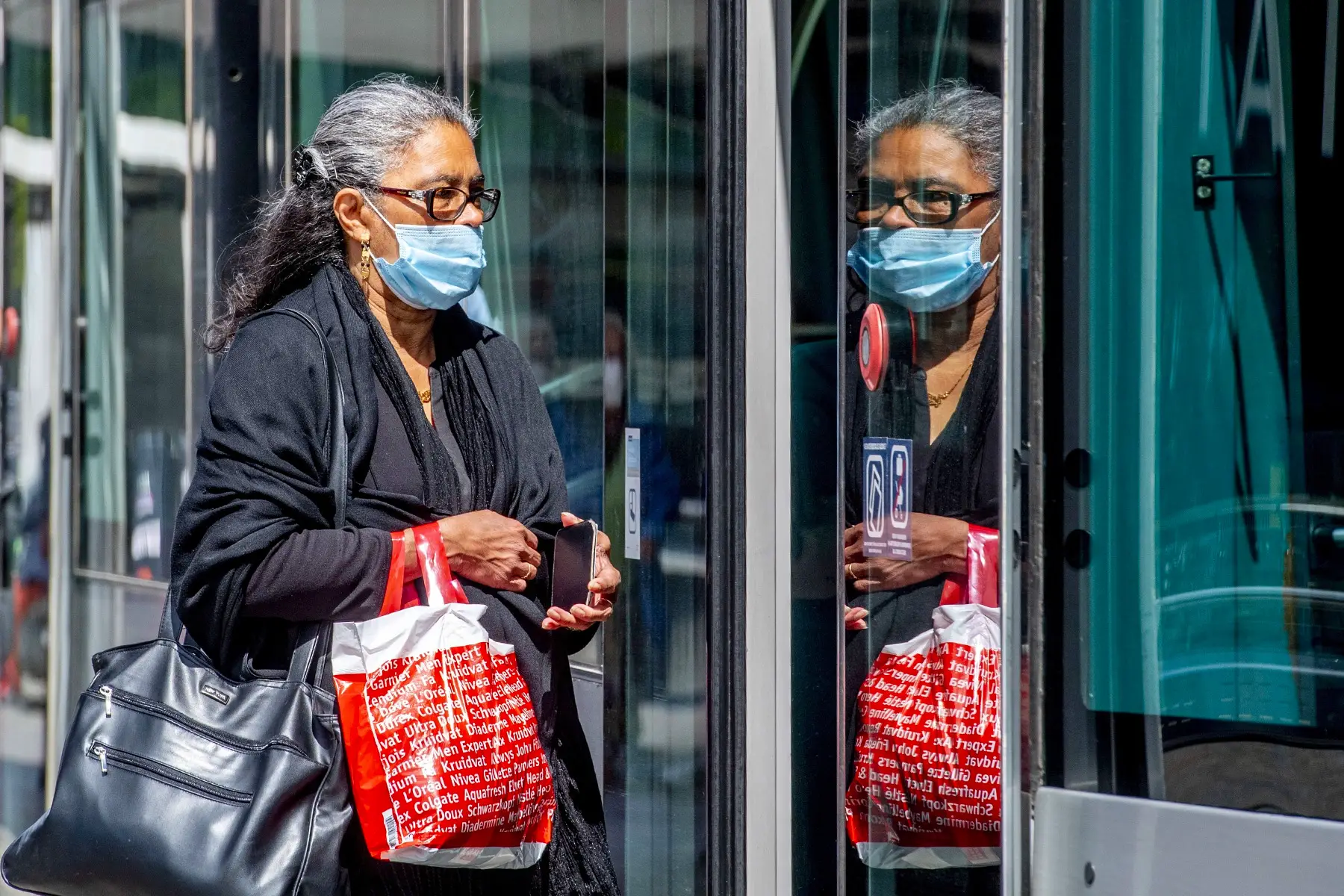
The district has a few notable green spaces such as Het Park, Museumpark, the Eendrachtstuin, and Tuin Schoonoord, offering easy respite from the urban bustle. Though there are fewer family-orientated facilities than in some other areas of Rotterdam, the lively city center makes up for it with pubs, bars, museums, and restaurants.
As you might expect, this also leads to more reports of public nuisance than elsewhere in the city. Instances of theft, violence, and vandalism are also relatively frequent.
Transport to Centrum
Cycling is the most convenient way to navigate the city, and – in typical Dutch style – most Rotterdammers prefer to travel by bike. If you aren’t quite ready for life on two wheels, the RET (Rotterdamse Elektrische Tram) also provides regular public transport services throughout the city.
Commuting outside of Rotterdam is also incredibly easy. Amsterdam Central Station can be reached within 40 minutes by train, and The Hague (Den Haag) is less than half an hour away.
Owning a car in the Netherlands is costly, and parking is in short supply. Residents who do not have a parking space within their building can apply for a street parking permit (parkeervergunning). However, spaces are limited, and there can be long waiting lists for permits, which can be costly.
Why should you move to Rotterdam Centrum?
Rotterdam Centrum is the ideal location for expats who enjoy a fast-paced life and the hustle and bustle of a vibrant city.
Northern districts
Hillegersberg-Schiebroek
Hillegersberg-Schiebroek is known for its nature and expansive green spaces, including the lake Bergse Plassen and the river Rotte.
Housing in this district is more spacious than in the center and particularly suitable for people with children. However, due to its popularity among both local and expat families, accommodation within the district can be pricey.
Facilities around Hillegersberg-Schiebroek
Largely unscathed by the Rotterdam blitz, the district of Hillegersberg-Schiebroek has managed to retain its village-like charm. As such, the district only has the necessary facilities. For example, the main shopping street of Kleiweg has a good selection of smaller stores. Bergse Dorpstraat offers boutique stores, small restaurants, and traditional Dutch brown bars.
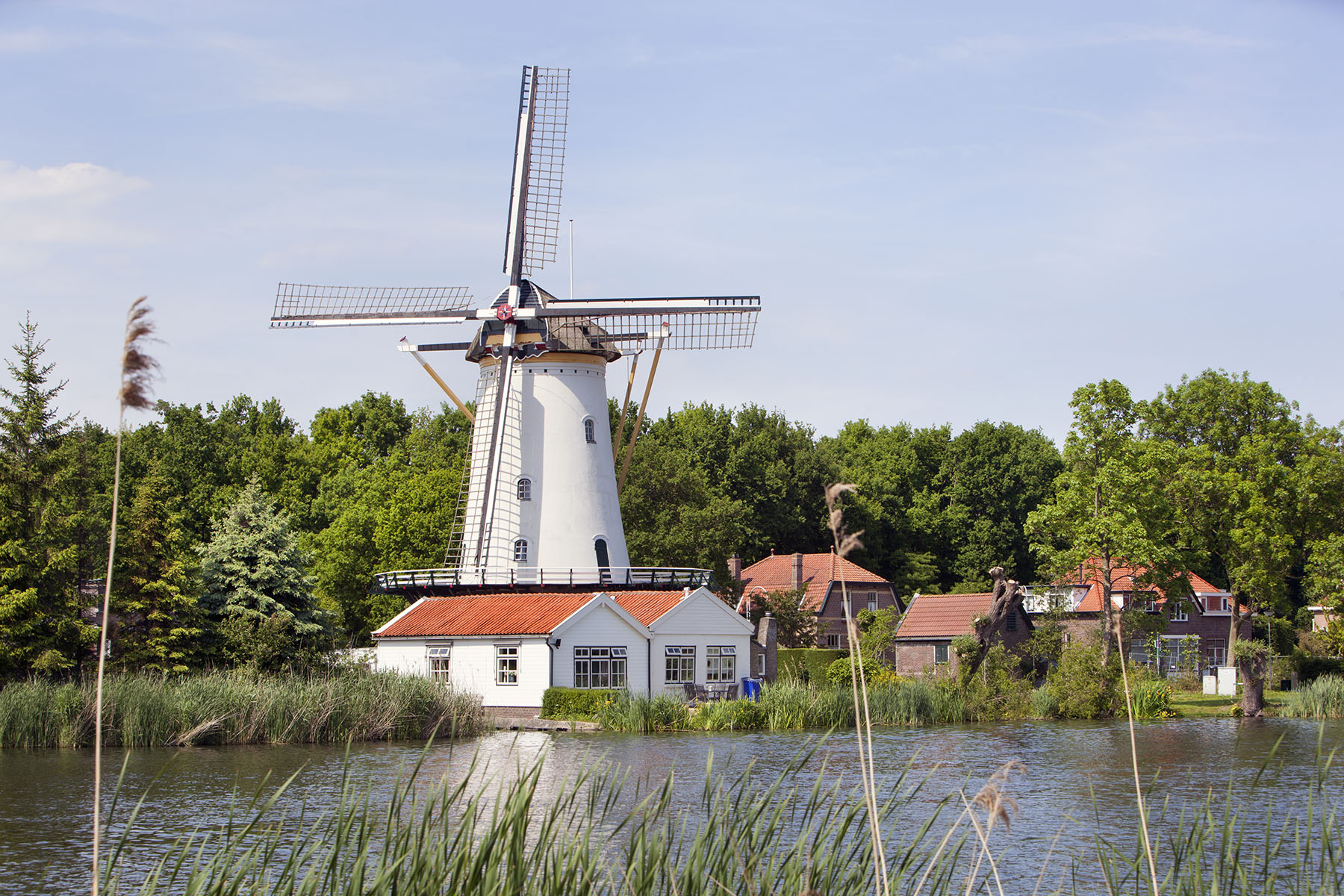
Hillegersberg is home to the Nord Anglia International School, the only International School located outside of the city center. The school accepts children from ages 3-18. Also within the district is the Dutch Stephanus school, offering special classes for non-Dutch speaking children.
Environment in Hillegersberg-Schiebroek
The many green spaces and waters in Hillegersberg-Schiebroek offer family-friendly leisure activities on and off the water. There are a number of parks, petting zoos, playgrounds, and a natural water swimming pool ‘t Zwarte Plasje. The district is also home to the forest area Bergse Bossen where residents can enjoy a number of high-end leisure facilities, including a golf course and horseback-riding school.
Municipality data shows Hillegersberg-Schiebroek is an incredible place to live in. There are no reports of violence or burglaries, and levels of public nuisance seem neglectable. Residents are also extremely content and don’t have much to complain about. All in all, it may be the best neighborhood in Rotterdam to take up residence.
Transport to Hillegersberg-Schiebroek
The district has good connections by bus, metro, and tram. The center of Rotterdam is reachable within roughly 20 minutes by bike.
Why should you move to Hillegersberg-Schiebroek?
Hillegersberg-Schiebroek is idyllic for spacious family living within close proximity to both nature and Rotterdam’s city center.
Rotterdam North (Noord)
In the words of the Rotterdam tourist board, Rotterdam Noord is a working-class district that has been transformed into a design Valhalla. Many of the large pre-war properties have been restored, making it a highly attractive place to take up residence.
Rotterdam Noord has a plethora of housing options, from smaller starter apartments and traditionally working-class homes to 1930s houses and modern high-rises. There is also a lively cultural scene, especially in the neighborhood of Het Oude Noorden, which offers the perfect blend of hip stores, entertainment, and artistic living.
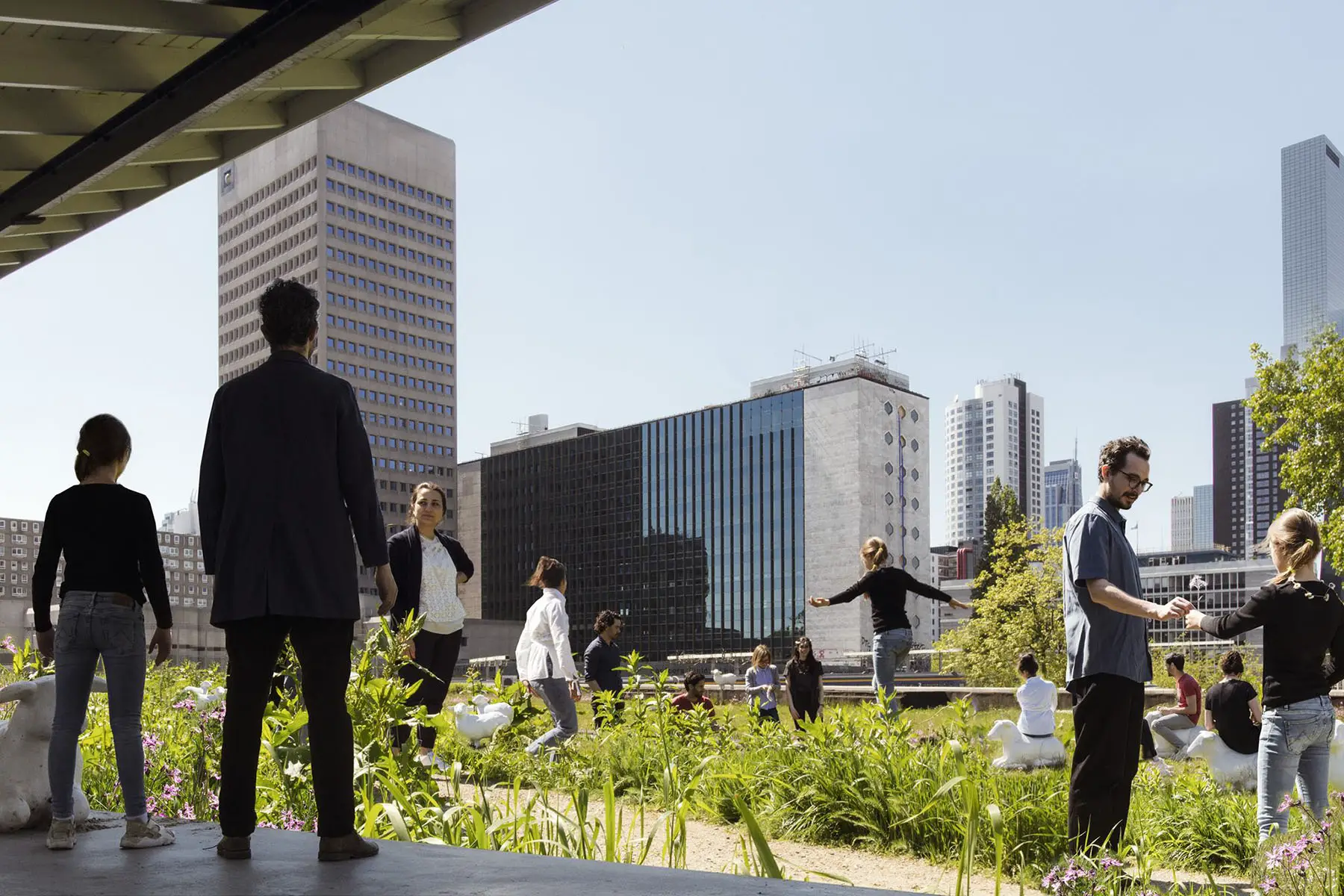
Facilities around Noord
The area closer to Rotterdam Centraal in particular is growing in popularity with entrepreneurs. Here, young expats can make the most of the budding social scene that is happening within the repurposed industrial areas.
Perhaps the most famous place in Rotterdam Noord is the Hofbogen Air Park (Luchtpark Hofbogen). This green city park is situated on the roof of the former train station Hofplein Station, and offers visitors a breath-taking view of the city, while surrounded by greenery.
Underneath the arches of the train track, a number of culinary, design, and fashion hotspots are popping up. It is now home to an array of hip businesses, including the jazz bar BIRD and eatery FG Food Labs, one of the best restaurants in Rotterdam.
Also appealing for families is the district’s Rotterdam International Secondary School which offers children the possibility of continuing their education in English while soaking up Dutch culture.
Environment in Noord
Aside from the hugely popular Diergaarde Blijdorp Zoo, the district boasts several large nature parks. These include Vroesenpark, known for its BBQ spots and walking routes, and the smaller Roel Langerakpark, noteworthy for its sports facilities, including a running track and disk golf (frisbee) court.
Despite – or perhaps due to – the upcoming nature of the district, data from the municipality suggests that residents are not super content with their area. There are reports of vandalism and public nuisance from traffic and construction, and public spaces leave much to be desired. Residents also complain about the housing options – more so than elsewhere in Rotterdam – citing small sizes, bad isolation, and moderate views as their main frustrations.
Transport to Noord
Rotterdam Noord borders the Central Station, making it an excellent choice for commuters working outside of the city. The city center is accessible within 10-15 by bike, or 20 minutes via metro, tram, or bus.
Why should you move to Rotterdam Noord?
Expats looking for comfortable homes within close proximity to the city center will likely fall in love with Rotterdam Noord. Equally, students and young professionals might be drawn to the district’s hipster scene in and around the main station. It’s also an ideal location for expats commuting in and out of Rotterdam.
Overschie
The charming and quaint village-like district of Overschie is located just north of Rotterdam Noord and Delfshaven. Because it covers a large area of polders, parks, and meadows, it’s one of the least populated districts of the city.

That said, there is a wide range of housing options available in Overschie, from historic homes to newly built apartments. Many of these are more affordable than within districts closer to the city center.
Facilities in Overschie
History buffs will want to check out Museum Overschie, where thousands of historical items are on year-round display. The district also has local shops and markets; however, for more serious shopping it’s best to head towards Rotterdam city center.
There are development plans for a collective indoor garden, play factory, library, and health center, but it is unclear when those will be realized.
Families looking for a local Dutch school can search on the municipality school finder.
Environment in Overschie
Though less popular with expats than the nearby district of Rotterdam Noord, Overschie offers peaceful and spacious living within a reasonable distance of the city center.
The district has gorgeous nature parks, such as Sidelingepark and Park Zestienhoven. Rotterdammers can find respite from the urban hustle and bustle at Country Estate De Tempel (Buitenplaats de Tempel), a protected estate on the outskirts of Oud-Overschie. And, anyone interested in growing their own crop, can join one of the many community gardens in the area.
Overschie is one of the safest and most socially cohesive districts of Rotterdam. It’s far less built up than many of the other neighborhoods, favoring green meadow areas and waterways instead. Residents – or Overschiënaars as they are called – seem fairly content living in the district, though do complain about the lack of facilities and public spaces.
Transport to Overschie
Although on the outskirts of the city, Rotterdam Central Station remains accessible by bike within 20-30 minutes. The A13 highway also runs through the district providing easy road connections for onward travel.
Why should you move to Rotterdam Overschie?
Overschie is worth a look for more affordable and spacious family living with a village-like feel. Rotterdam The Hague Airport is also located within the district, making it an ideal location for those working in aviation or needing to fly to other European destinations frequently.
Eastern districts
Kralingen-Crooswijk
As the home of Rotterdam’s two largest universities, it may come as no surprise that Kralingen-Crooswijk is popular among students and young professionals. The district’s culture, diversity, residential areas, and parks also create a lively atmosphere that will be hard for some people to pass on.
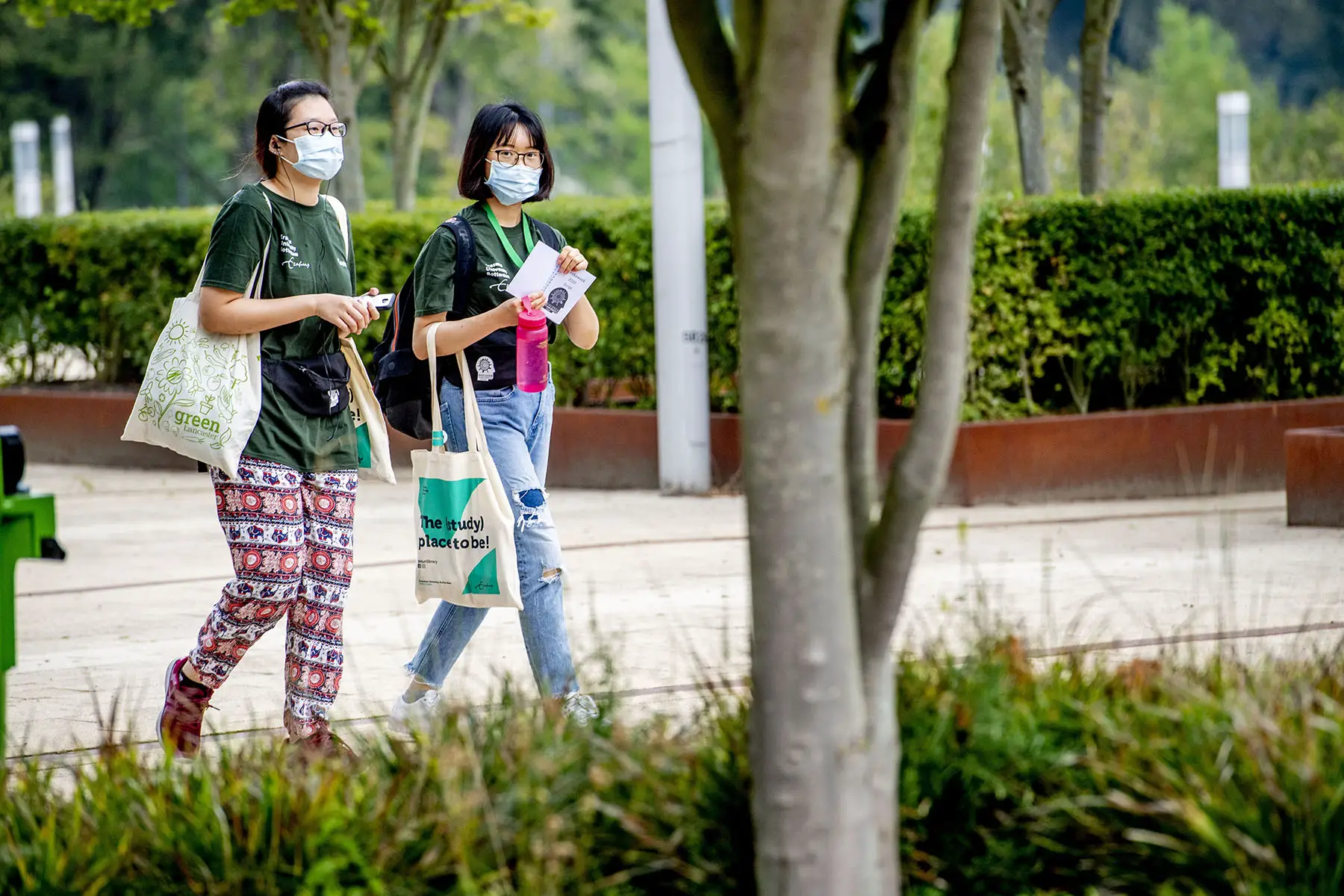
In terms of housing, the district north of the Nieuwe Maas offers a blend of old and new, with something for all budgets. In Kralingen, the area around Rosenburg Park offers stately villas and avenues of mansion houses. Meanwhile, cosmopolitan Crooswijk offers more affordable apartments amidst its cozy restaurants and brown bars.
Nieuw-Crooswijk is also undergoing development and is becoming particularly sought after by young families and couples in search of more affordable homes.
Facilities around Kralingen-Crooswijk
Located within Kralingen-Crooswijk are Erasmus University Rotterdam (Erasmus Universiteit Rotterdam – EUR) and Rotterdam University of Applied Sciences (RUAS – Hogeschool Rotterdam). Consequently, the district is well set up to cater to student life, hosting four headquarters of the main student associations.
From December to February, skaters can make the most of being on the ice at the Skating Rink Rotterdam (Schaatsbaan Rotterdam). For year-round indoor swimming, it’s possible to float beneath the glass ceiling of the Eastern Swimming Pool (Oostelijk zwembad), which is in itself a national monument.
For less sporty leisure time, Kralingen-Crooswijk’s many waterfront bars and eateries offer the perfect escape. One of the most notable restaurants in the area is Restaurant De Tuin, which is located in a mansion dating back to 1867.
Expats parents can send their children to Talmaschool, which offers bridging classes to learn or improve children’s Dutch language skills. And, although not directly within the district, all three international schools in Rotterdam are within commutable distance.
Those requiring medical care can access the best the Netherlands has to offer via the local Erasmus Medical Center. This teaching hospital works closely with the university and is a global leader in medical research.
Environment in Kralingen-Crooswijk
Located within the district is Kralingse Bos, Rotterdam’s largest nature park. Together with its accompanying lake, this park offers numerous leisure activities both on and off the water. In the summer, the area becomes a hotspot for BBQing and sunbathing, while the petting zoo and playgrounds provide entertainment for younger visitors.
The district scored well on environmental, social, and safety aspects in the 2022 municipality survey. This also reflects its popularity among the residents who have made it their home. That said, the public spaces could do with some improvement, and there have been reports of public nuisance.
Transport to Kralingen-Crooswijk
It’s very easy to bike from Kralingen-Croosijk to Rotterdam city center. For those who aren’t comfortable going into traffic on two wheels, public transport connections will get you to the center within approximately 15 minutes.
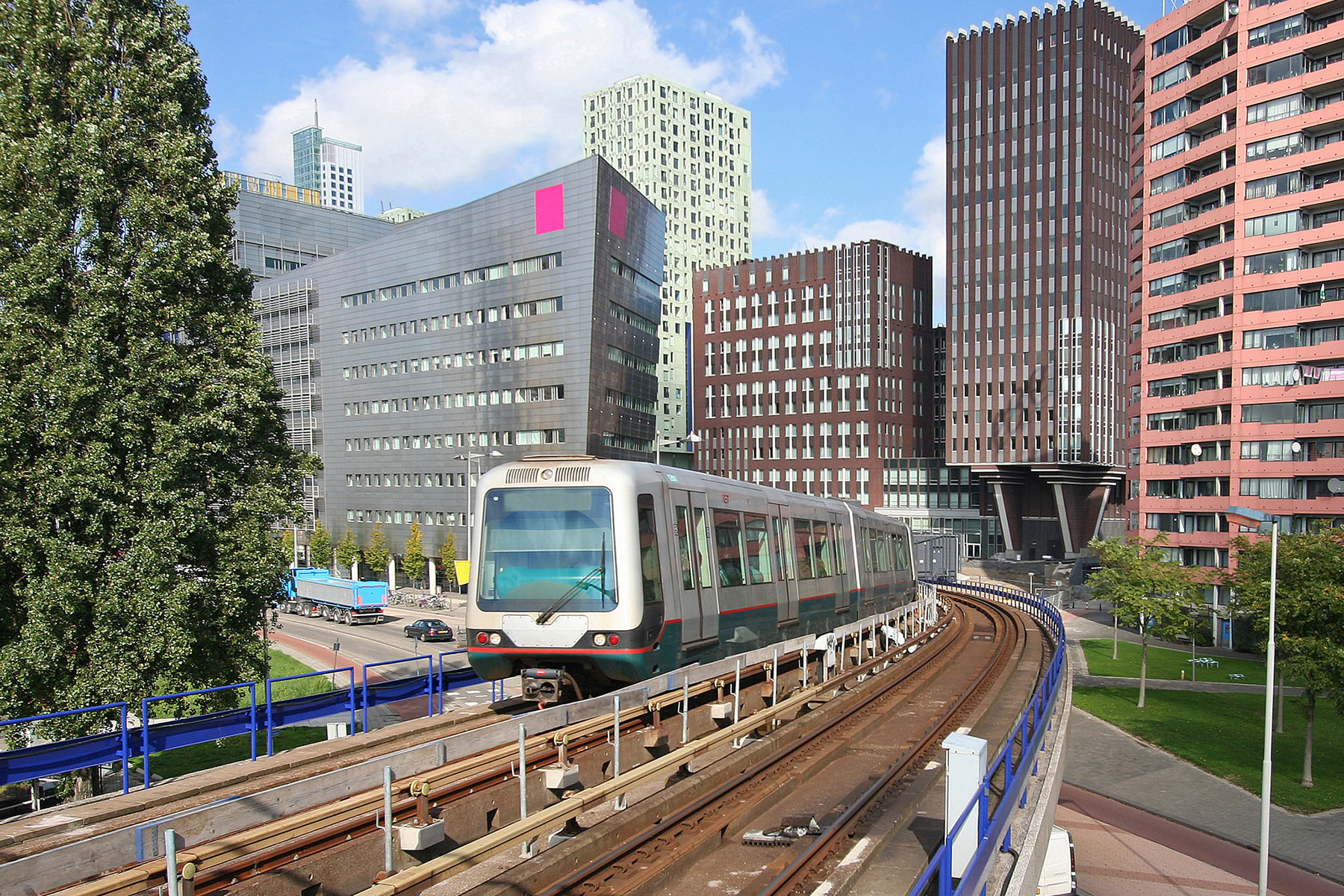
Why should you move to Rotterdam Kralingen-Crooswijk?
There is no doubt that Kralingen-Crooswijk is the premier destination for students in Rotterdam. However, it also has a lot to offer young families and professionals who enjoy the buzz of city living with good access to nature and leisure facilities.
Prins Alexander
On the north-eastern border of Rotterdam lies Prins Alexander, one of the city’s newest residential areas. This former agricultural area was developed in 1961 and has several more residential projects underway. As such, the district remains very green and has many parks, lakes, and green spaces to soak up some nature.
Facilities in Prins Alexander
The Alexandrium shopping center is the hub of retail activity in Prins Alexander, catering to most shopping needs. There are also several entertainment venues and sports facilities to spend the day.
Families looking for a local Dutch school or daycare can search on the municipality school finder. If you’re looking for international options, the central districts are not too far away.
Environment in Prins Alexander
Municipality and resident surveys revealed the district to be one of the safest and most socially cohesive areas of Rotterdam. The neighborhood of Het Lage Land has even been described as the friendliest neighborhood in the city and is especially popular among retirees and elderly residents.
Transport to Prins Alexander
Prins Alexander has several metro stations located within the district, as well as a train stop for mainline services. You can reach Rotterdam Central Station within nine minutes. If you’re more of the sporting kind, the same journey takes around 30–45 minutes by bike.
Why should you move to Rotterdam Prins Alexander?
Since Prins Alexander isn’t one of the most sought-after districts of Rotterdam – especially among families, working professionals, and expats – it is fairly easy to find housing options where you can enjoy quiet and green living.
Southern districts
Charlois
Charlois – pronounced Sjaarloos – is one of the oldest areas in Rotterdam, dating back to 1462. The current district is a blend of residential neighborhoods, parks (such as Zuiderpark), and key cultural venues (e.g., Ahoy Rotterdam). It is also one of the most diverse districts in the city, so you’ll be sure to mix with an international community.

If you’re looking to move to Charlois, apartment living is the norm, especially around the built-up central point of Zuiderplein. Further out in the district, you’ll find modern, spacious apartments and even terraced houses (in Pendrecht and De Wielewaal).
Facilities around Charlois
The area around Zuidplein is the heart of the district, where you will find a large shopping center, theater, and the popular event space Ahoy. The highly-rated Ikazia Teaching Hospital is located just across the district boundary in neighboring Feijenoord, providing easily accessible 24-hour emergency care.
Families looking for the perfect school or daycare in Charlois can use the online school finder to narrow the search by area and education type. It’s even possible to read reviews and inspection reports of each individual facility. Two schools within the district, De Kameleon and Over de Slinge offer special provisions for expat children who are new to the Dutch language.
Environment in Charlois
Charlois’ mix of urban and green spaces makes it a district that is suitable for individuals and families of all ages. For example, the neighborhood of Heijplaat is a green oasis hidden in the middle of the city harbor. Originally created for dock workers at the beginning of the last century, it is now an area where sustainable housing is the norm and residents are safe from crime.
The municipality has loads of plans to improve the district. There are many housing developments for both single and family occupancy, and it’s also planning a new seven-acre Nelson Mandela Park on the harborfront.
That said, the 2022 living situation does not yet reflect this rosy picture. According to data from the Rotterdam municipality, residents feel they have a lower quality of life and that their neighborhood is unsafe due to violence, vandalism, and public nuisance. It’s worth noting, however, that the only actual police reports were regarding nuisance from neighbors.
Responses also indicated that people don’t like living in (some areas of) Charlois and feel isolated. While the environment and green spaces are objectively great, residents complain about offensive odors from traffic, sewage, and construction, as well as noise from traffic and construction.
Transport to Charlois
Charlois connects easily to the city center via bus, tram, and metro. It takes around 20 minutes by bike. Resident permits or paid street parking are options in northern Charlois, but parking may be limited. Parking is more readily available further out in the district.
Why should you move to Rotterdam Charlois?
Charlois is an ideal district for expats looking to mix with an international community. Depending on the area (e.g., Zuiderparkwijk), it’s also a nice place for anyone wanting to take up residence in close proximity to green open spaces.
Feijenoord
The district of Feijenoord lies on the southern banks of the Nieuwe Maas river and is connected to the city center by the Erasmus bridge. Historically a dockside area, it’s ever-evolving with a mix of traditional warehouses and new residential skyscrapers.
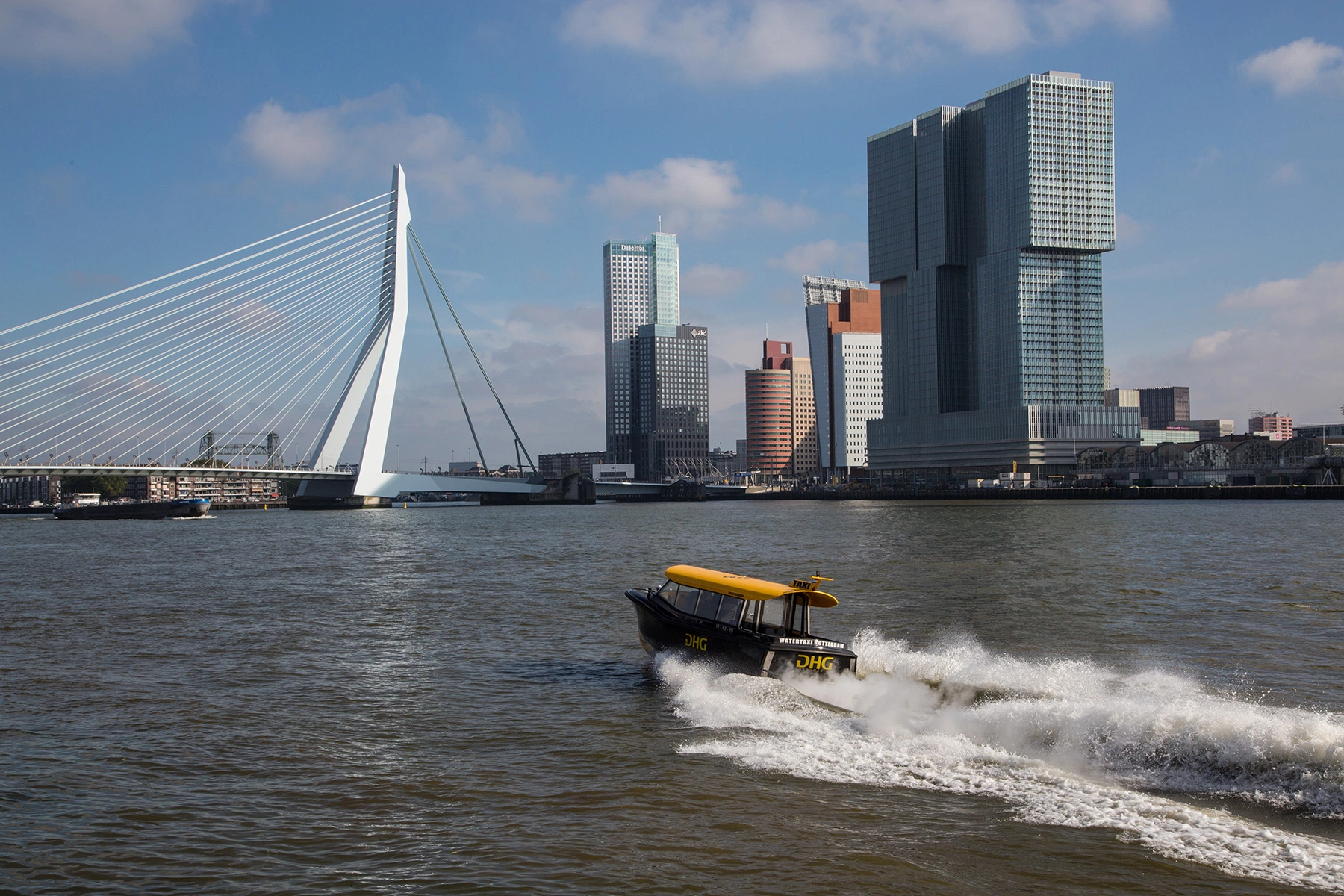
Facilities around Feijenoord
Though not a traditionally green area, Feijenoord is home to a few parks as well as the protected, 100-year-old garden village of Vreewijk which has nearly 300 national monuments. The district is also at the forefront of Rotterdam’s sporting scene, hosting the largest skatepark in the Netherlands, and the iconic Feyenoord Stadium (De Kuip). The last one also doubles as a concert venue for large events.
Younger expats may also be drawn to the now-trendy neighborhood of Katendrecht. This former red-light district area has become a hub for social and cultural activities and is home to many waterfront eateries. For example, The Fenix Food Factory, a former warehouse building, is now a culinary mecca for foodies. Visitors can enjoy traditionally made cuisine – such as artisanal bread, meat, and beers – alongside affordable street food from the market’s revolving food trucks.
Expats with children can make use of the online school finder to locate schools and daycares within the district. For international schools, Rotterdam Centrum is just a short commute away. Alternatively, Pniëlschool and De Sleutel offer provisions for children without existing knowledge of the Dutch language.
The district’s Ikazia Teaching Hospital offers high-rate 24-hour emergency care.
Environment in Feijenoord
Much of Feijenoord consists of urban and residential areas. Its diverse community is showcased through many of the stores, restaurants, and cultural spots (e.g., the market on Afrikaanderplein). However, gentrification is leading to a change in the district’s demographics. As Feijenoord has the city’s second-lowest average income, many existing residents find themselves priced out of newer developments as wealthier people move in.
According to data from the municipality, Feijenoorders are not very satisfied with their district – especially with the quality of housing, public spaces, and public participation. Many experience public nuisance from neighbors, traffic, and construction.
Transport to Feijenoord
Feijenoord is connected to the city center by the iconic Erasmus Bridge. Residents can easily reach the rest of Rotterdam by bike, metro, bus, and tram.
The city’s Water Taxi is also a reliable and speedy option to get from A to B. In fact, it often proves to be faster than traveling by road. Running like a regular ferry service from the waterfront, the Water Taxi also offers private taxi journeys on demand.
Why should you move to Rotterdam Feijenoord?
Young expats in particular will find the rapidly developing scene around Feijenoord a big draw. It’s an ideal district where you can best experience Rotterdam’s growth and innovation. Concert-goers and massive football fans will also enjoy the close proximity to the Kuip.

Hoogvliet
Surrounded by water and parks, Hoogvliet is a former dike village on the southwest outskirts of Rotterdam that is growing in popularity with families. It is also home to a diverse international community, making it easy for expats to blend right in.
While some neighborhoods of Hoogvliet used to be impoverished, the district underwent restructuring in the 2000s. Now, nearly one-fifth of houses are built in the new century. There are also a number of new housing developments underway to broaden the appeal of living around the district’s center, including the addition of around 700 new sustainable homes.
Facilities in Hoogvliet
The center of Hoogvliet currently stands as the district’s main shopping area. In addition to the housing developments, the district is looking to improve and create more green spaces, and invest in attracting more stores, restaurants, and facilities for art and culture.
Environment in Hoogvliet
Hoogvliet includes Rotterdam’s green belt (groene gordel), a 10 km long recreational route for cycling, hiking, and enjoying nature.
The quiet and tranquil nature of living is also reflected in the residents’ quality of life. According to the municipality, Hoogvliet is a fine place to take up residence. The district has little to no reports of violence, theft, or vandalism. There is, however, dissatisfaction with the number of (public) facilities. Responses also indicate that residents are unhappy with their level of social participation and feel left out of society.
Transport to Hoogvliet
Though further out from Rotterdam’s city center, it’s easy to travel to and from Hoogvliet by car or via the district’s metro. Going by bike seems out of the question; Rotterdam Centrum is approximately an hour away.
Why should you move to Rotterdam Hoogvliet?
Hoogvliet is perfect for families who want to live close to nature. And with its plans for the future, it has great potential for anyone looking to live in an up-and-coming district for cheap.
IJsselmonde
On the southeast side of Rotterdam, lies the vibrant and diverse district of IJsselmonde. Here, locals and expats can experience a mix of urban living and green spaces.
The original dike village of Oud-IJsselmonde, which is close to the Nieuwe Maas waterfront, is the most picturesque part of the district where you can find authentic Dutch row houses and charming streets.

Facilities in IJsselmonde
Typically one of Rotterdam’s quieter districts, the highlight of IJsselmonde’s social calendar from 1700 through to 2020, was its annual 2-day horse market and its accompanying fair, art exhibition, and concert. However, it has since been decided to discontinue the centuries-old event, due to fights among visitors, a decline in subsidies, and protests from animal rights activists.
That said, there are plenty of other activities to do. There are a number of weekly markets within the district that reflect the cultural diversity of its residents. Shopping fanatics can also access over 80 stores and restaurants within the district’s Keizerswaard shopping center. Along the Stadionweg is also a 14-screen Pathé, which is the largest cinema in Rotterdam.
Expats with children will delight in going to The Play Factory (De Speelfabriek), a play workshop for children from 5 to 12 years old where they can explore making, building, and cooking things themselves.
Environment in IJsselmonde
IJsselmonde boasts a scenic waterfront area where locals often go sailing. It’s also home to the large nature park Park De Twee Heuvels, which includes a skate park and indoor pool.
Nestled between Rotterdam and Dordrecht is a gorgeous recreational area where you can enjoy the typical polder nature scene – complete with green dikes, historical castles, and picturesque villages. This area is perfect for walking, cycling, and horseback riding.
Data from the Rotterdam municipality suggests that IJsselmonde has great social initiatives (e.g., volunteering and informal care), has relatively little crime, and is environmentally sound. However, facilities and public spaces are lacking, and residents don’t seem all that content to live there.
Transport to IJsselmonde
You can travel between the center of IJsselmonde and Rotterdam Centraal by bike or public transport, which takes around half an hour.
Why should you move to Rotterdam IJsselmonde?
Expats looking for a more affordable, quieter environment that’s still within close proximity of Rotterdam will benefit from the low-cost housing options in IJsselmonde.
Western districts
Delfshaven
Constructed in 1389, the harbor town of Delfshaven was built to provide the city of Delft waterway access to the Nieuwe Maas river. The district was spared wartime destruction and now stands proud as Rotterdam’s most historic area. Its charming canals, picturesque medieval streets, and traditional Dutch architecture offer up a picture-postcard area to live in.

Because of its popularity, available housing is scarce. Rental prices range from €900-2,500 for apartments and €1,500-4,500 for houses. Purchase prices can differ greatly; prices range from €250,000-400,000 for apartments and €400,00-1,300,000 for houses.
Facilities around Delfshaven
Delfshaven is home to the historic Pelgrimvaderskerk (Pilgrim Fathers’ Church), from which a group of English-speaking Christians set sail for the New World in the 17th century. These pilgrims went on to be recognized as the co-founders of the US. Another notable landmark is the city brewery (stadsbrouwerij), which produces and serves local beers such as Pilgrim beer (pilgrim bier), named after the church.
As a small district, the number of facilities and schools is more limited than elsewhere in Rotterdam. Having said that, expat parents can register their offspring with these district schools that offer special provisions for children with little to no Dutch language skills:
Environment in Delfshaven
Historically, Delfshaven was known for its herring fishers and gin distilleries. The latter tradition is still apparent in the many waterside gin bars. Many of the area’s historic townhouses are now home to quaint antique shops, cafes, and restaurants.
According to municipality data, Delfshaven is a nice neighborhood that is safe from theft, violence, and burglaries. Although public nuisance is low, residents feel there is more present than they report. Some people also indicate feeling discriminated against in and around their neighborhood.
Transport to Delfshaven
Delfshaven is just a 13-minute bike ride away from Rotterdam Central Station. There are also regular bus and tram services that connect to the city center.
Why should you move to Rotterdam Delfshaven?
Delfshaven is perfect for expats wishing to enjoy quieter neighborhood living, near charming canals, cobbled streets, and historic buildings.
Hook of Holland (Hoek van Holland)
Sometimes called Rotterdam Beach, Hoek van Holland is Rotterdam’s only coastal district. It is located some 30 km outside of the city center and, with just over 10,000 inhabitants, has a village-like feel.
For most Rotterdammers, Hoek van Holland is an idyllic place to escape city life. Its golden sands, sprawling dunes, water-related recreational activities, and many beach clubs are a siren call for anyone looking to go on a day trip or short getaway. But the district also has a number of attractive homes for those who want to enjoy beachside living more permanently.
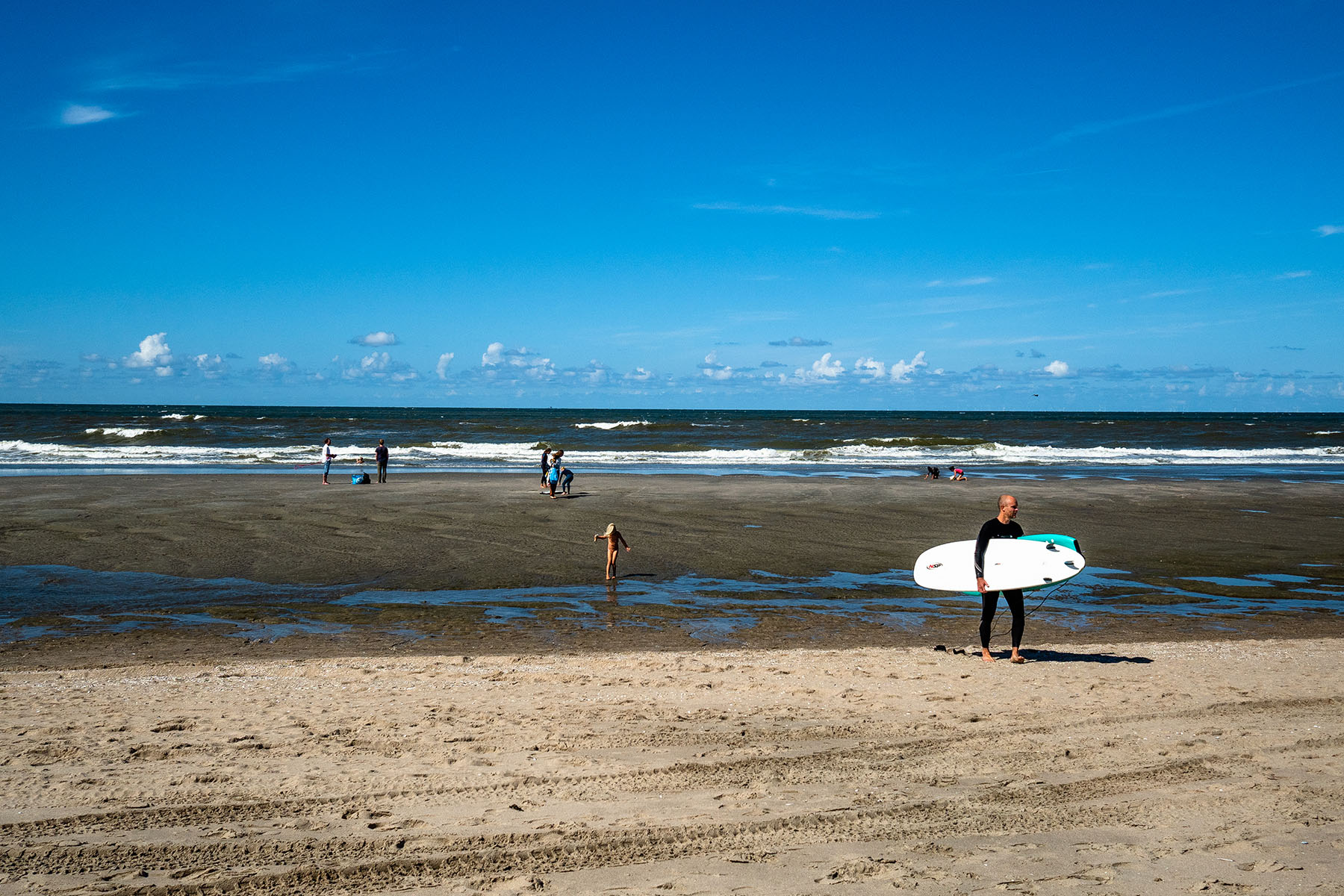
Most Hoekenezen – as the area’s residents are known – reside in the main village, set back slightly from the seafront. There are also a number of housing developments underway for newcomers to take up residence.
Facilities in Hoek van Holland
Though facilities are in short supply, the village has a few primary schools, shops, and sports facilities including a tennis court and swimming pool. For those interested, there is also a lighthouse (vuurtoren) that currently serves as a museum.
Environment in Hoek van Holland
Hoek van Holland’s sandy beaches are a hotspot among locals and tourists alike, and with good reason. They have repeatedly received the iconic Blue Flag award, meaning they meet the highest level of environmental and safety standards.
The tumultuous history of the area is drawn into the landscape as well. Traces of the German Nazi defense line that stretched along the coast from Norway to Spain are still evident in the sand dunes. Various wartime bunkers and underground tunnels offer insight into the history amidst the protected areas of flora and fauna.
Data shows this district of Rotterdam is a great place to live in. Hoek van Holland has no reports of public nuisance, violence, or theft, whatsoever. Responses from residents also show that they’re mostly content, though, they complain about the lack of public facilities.
Transport to Hoek van Holland
Hoek van Holland has its own metro station which opens straight onto the beachfront. The journey to or from Rotterdam Central Station takes about 35 minutes.
The district also serves as a port for the ferry service Stenaline, from which you can set sail for Harwich in the UK on a daily basis.
Why should you move to Hoek van Holland?
Hoek van Holland is great for beach-loving expats who want to live near Rotterdam and don’t mind the small village life.
Pernis
Surrounded by water, Pernis is a garden village in the middle of the port area of Rotterdam. It is located on the west side of the city and is home to one of the largest oil refineries in the Netherlands. While that might scare some newcomers away, others will be enchanted by the district’s laid-back character, charming people, and beautiful surrounding nature.

Facilities in Pernis
As Pernis is mostly an industrial and residential district, there aren’t many facilities to keep bored locals and expats entertained. There is a swimming pool and a library, and excellent transport connections to the city center where you’ll likely find more things to do.
Environment in Pernis
Surrounded by the Pernisse waterfront, residents have a panoramic view of the water with its many ships, and Rotterdam in the distance. Moreover, since there is so little light pollution, the district offers a clear and extraordinary view of the starry sky every night.
Nature parks Deijffelbroek Park and Pernisser Park are a favorite among locals for walking, cycling, and feeding deer. The latter also has an outdoor swimming pool and a Children’s Forest, where city folk can get acquainted with different types of trees.
The district seems to be a bit of a hidden secret. Pernis is extremely safe and socially cohesive, with no criminal complaints whatsoever. It also seems to be one of the only districts of Rotterdam where residents don’t report public nuisance. While there are objectively few facilities, inhabitants seem very content with their living situation.
Transport to Pernis
Pernis is connected to the Rotterdam city center by bus and metro services. The metro also runs through the Benelux Tunnel, an ingenious river crossing underneath the Nieuwe Maas. This tunnel also allows vehicles and bikes to access routes to Schiedam and Vlaardingen.
From the waterfront, the Water Taxi is also a great option to travel to the heart of Rotterdam in no time.
Why should you move to Rotterdam Pernis?
Expats with a love for water will enjoy the affordable housing options and incredible views that Pernis has to offer.
Rozenburg
West of the city center is Rozenburg, an island district that is connected to the mainland by bridges and tunnels. The district is located between Rotterdam Port and the more industrial areas of the city. While a little isolated, Rozenburg has a distinct suburbian-like feel with just one main residential area. Expats will find spacious middle-class housing options with quite a bit of greenery.
Facilities in Rozenburg
As Rozenburg is mostly a suburban area, there aren’t many facilities to keep bored residents occupied during their days off. There are several sporting facilities, including a swimming pool, and a shopping street with local shops and eateries. Expats with children will also enjoy visiting the local windmill and petting zoo.

Environment in Rozenburg
Located towards the shoreline is Rozenburg Headland (Landtong), a 10 km long nature reserve where visitors can experience the rugged nature that makes this part of the Netherlands so beautiful. On any given day, you’ll find flocks of migratory birds, wild cattle, and galloping wild horses. At low tide, you can even see seals resting in the sun.
Residents of Rozenburg are very socially active and organize loads of activities, including markets, music festivals, and cycling and walking tours. Municipality data shows the district is a great place to live without the fear of crime. Responses suggest that people are mostly content despite the lack of public facilities.
Transport to Rozenburg
The district of Rozenburg is quite far from Rotterdam Centrum and it’ll take residents about an hour by tram or train to reach the city. Those who prefer to go by bike can expect around an hour and a half of travel time.
Why should you move to Rotterdam Rozenburg?
Rozenburg is an ideal district for expats looking for a quieter suburban community life close by the shoreline.
Which neighborhoods to avoid in Rotterdam
On the whole, Rotterdam is considered one of the more criminally dangerous cities in the Netherlands, due to reports of explosions, stabbings, and gun violence.
In 2022, it was the city with the most homicides (16 victims in Rotterdam, compared to a total of 142 in the Netherlands). Rotterdam also had just over 11,000 reports of violent and sexual crimes (the Netherlands totaled nearly 80,100 cases in 2022).
The most registered crimes in 2022 occurred in the districts of:
- Rotterdam Centrum
- Charlois
- Delfshaven
- Feijenoord
- Prins Alexander

As with any large city, expats should exercise common sense to protect their personal safety and their belongings when traveling alone at night or in busy areas of Rotterdam where pickpocketing might occur.
With regard to air quality and pollution, Rotterdam is considered a safe city. The Dutch government and local authorities have implemented strict regulations to mitigate the impact of the city’s industries on air quality and the local environment. However, you may wish to avoid setting up homes in certain areas near ports and highways.
Where to find a job in Rotterdam
There are multiple resources available to help expats find work in Rotterdam. Websites such as Up! Rotterdam allow expats to search for positions independently. For skilled jobs in the Greater Rotterdam region – including the easily commutable cities of Delft, Leiden, and The Hague – expats can browse the dedicated website of Work in Rotterdam – The Hague which has a focus on international companies.
There are also a number of recruitment agencies dedicated to pairing internationals with companies in Rotterdam and the surrounding areas, including:
Useful resources
- Living in Rotterdam – a great resource for life in Rotterdam
- Rotterdam Expat Center – an organization that helps expats set up life in Rotterdam
- The 2022 Neighborhood Profile – data from the municipality where you can research the environmental, social, and safety aspects of any of the districts
- Rotterdam Municipality School Finder – official municipal website where you can find schools in the city



